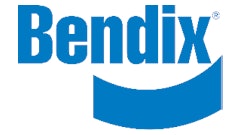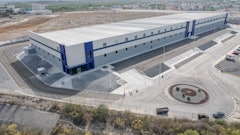Economic activity in the manufacturing sector expanded in June for the 13th consecutive month, and the overall economy grew for the 61st consecutive month, say the nation's supply executives in the latest Manufacturing ISM Report On Business.
The report was issued by Bradley J. Holcomb, CPSM, CPSD, chair of the Institute for Supply Management (ISM) Manufacturing Business Survey Committee. "The June PMI registered 55.3%, a decrease of 0.1 percentage point from May's reading of 55.4%, indicating expansion in manufacturing for the 13th consecutive month. The New Orders Index registered 58.9%, an increase of 2% points from the 56.9% reading in May, indicating growth in new orders for the 13th consecutive month. The Production Index registered 60%, one percentage point below the May reading of 61%. Employment grew for the 12th consecutive month, registering 52.8%, the same level of growth as reported in May. Inventories of raw materials remained at 53%, the same reading as reported in both May and April. The price of raw materials grew at a slower rate in June, registering 58%t, down two percentage points from May."
Of the 18 manufacturing industries, 15 are reporting growth in June in the following order: Furniture & Related Products; Nonmetallic Mineral Products; Food, Beverage & Tobacco Products; Machinery; Fabricated Metal Products; Computer & Electronic Products; Transportation Equipment; Miscellaneous Manufacturing; Electrical Equipment, Appliances & Components; Apparel, Leather & Allied Products; Wood Products; Printing & Related Support Activities; Petroleum & Coal Products; Primary Metals; and Paper Products. The three industries reporting contraction in June are: Textile Mills; Chemical Products; and Plastics & Rubber Products.
WHAT RESPONDENTS ARE SAYING ...
"Business volume is increasing at a good pace and consumers appear to be spending more." (Food, Beverage & Tobacco Products)
"The strength of the automotive industry continues to drive the high demand for steel." (Fabricated Metal Products)
"Business still very solid and strong — Class 8 Truck and RV." (Transportation Equipment)
"Seasonal business remains strong." (Primary Metals)
"Another strong month overall." (Computer & Electronic Products)
"Outlook is better. General uptick in our company's confidence." (Chemical Products)
"Orders are picking up, but pricing has declined in last month. Not the norm for this time of year." (Wood Products)
"Conditions are slightly more favorable than last year." (Printing and Related Support Activities)
"Business is picking up once again." (Machinery)
"Business conditions are stable to improving." (Miscellaneous Manufacturing)
COMMODITIES REPORTED UP/DOWN IN PRICE and IN SHORT SUPPLY
Commodities Up in Price
Aluminum (5); Electric Components; Hydrochloric Acid; Lumber (4); MRO Supplies (2); Natural Gas (2); Nickel (4); Plastic Components; Stainless Steel (4); Steel (7); and Steel — Hot Rolled (3).
Commodities Down in Price
Copper (4) is the only commodity reported down in price.
Commodities in Short Supply
Helium (2); and Wood Pallets (2).
Note: The number of consecutive months the commodity is listed is indicated after each item.
JUNE 2014 MANUFACTURING INDEX SUMMARIES
PMI
Manufacturing expanded in June as the PMI registered 55.3%, a slight decrease of 0.1 percentage point when compared to May's reading of 55.4%. A reading above 50%t indicates that the manufacturing economy is generally expanding; below 50% indicates that it is generally contracting.
A PMI in excess of 43.2%, over a period of time, generally indicates an expansion of the overall economy. Therefore, the June PMI indicates growth for the 61st consecutive month in the overall economy, and indicates expansion in the manufacturing sector for the 13th consecutive month. Holcomb states, "The past relationship between the PMI and the overall economy indicates that the average PMI for January through June (54.0%) corresponds to a 3.6% increase in real gross domestic product (GDP) on an annualized basis. In addition, if the PMI for June (55.3%) is annualized, it corresponds to a 4.0% increase in real GDP annually."
New Orders
ISM's New Orders Index registered 58.9% in June, an increase of two percentage points when compared to the 56.9% reported in May, indicating growth in new orders for the 13th consecutive month. A New Orders Index above 52.1%, over time, is generally consistent with an increase in the Census Bureau's series on manufacturing orders (in constant 2000 dollars).
The 12 industries reporting growth in new orders in June — listed in order — are: Nonmetallic Mineral Products; Wood Products; Furniture & Related Products; Food, Beverage & Tobacco Products; Machinery; Fabricated Metal Products; Electrical Equipment, Appliances & Components; Plastics & Rubber Products; Paper Products; Transportation Equipment; Petroleum & Coal Products; and Miscellaneous Manufacturing. The four industries reporting a decrease in new orders during June are: Textile Mills; Apparel, Leather & Allied Products; Chemical Products; and Computer & Electronic Products.
Production
ISM's Production Index registered 60% in June, which is a decrease of one percentage point when compared to the 61% reported in May, indicating growth in production for the fourth consecutive month. An index above 51.1%, over time, is generally consistent with an increase in the Federal Reserve Board's Industrial Production figures.
The 13 industries reporting growth in production during the month of June — listed in order — are: Nonmetallic Mineral Products; Printing & Related Support Activities; Furniture & Related Products; Food, Beverage & Tobacco Products; Miscellaneous Manufacturing; Machinery; Electrical Equipment, Appliances & Components; Fabricated Metal Products; Paper Products; Primary Metals; Computer & Electronic Products; Petroleum & Coal Products; and Transportation Equipment. The only industry reporting a decrease in production during June is Chemical Products.
Employment
ISM's Employment Index registered 52.8% in June, which is the same percentage as reported in May, and represents the 12th consecutive month of growth in employment. An Employment Index above 50.6%, over time, is generally consistent with an increase in the Bureau of Labor Statistics (BLS) data on manufacturing employment.
Of the 18 manufacturing industries, nine reported growth in employment in June in the following order: Furniture & Related Products; Textile Mills; Petroleum & Coal Products; Fabricated Metal Products; Transportation Equipment; Machinery; Computer & Electronic Products; Food, Beverage & Tobacco Products; and Miscellaneous Manufacturing. The five industries reporting a decrease in employment in June are: Plastics & Rubber Products; Primary Metals; Paper Products; Chemical Products; and Nonmetallic Mineral Products.
Supplier Deliveries
The delivery performance of suppliers to manufacturing organizations slowed in June at a slower rate relative to May as the Supplier Deliveries Index registered 51.9%. This month's reading is 1.3 percentage points lower than the 53.2% reported in May. A reading below 50% indicates faster deliveries, while a reading above 50% indicates slower deliveries.
The 11 industries reporting slower supplier deliveries in June — listed in order — are: Plastics & Rubber Products; Primary Metals; Fabricated Metal Products; Machinery; Paper Products; Miscellaneous Manufacturing; Food, Beverage & Tobacco Products; Transportation Equipment; Computer & Electronic Products; Chemical Products; and Electrical Equipment, Appliances & Components. The only industry reporting faster supplier deliveries during June is Textile Mills. Six industries reported no change in supplier deliveries in June compared to May.
Inventories*
The Inventories Index registered 53% in June, the same percentage as reported in both May and April, and indicates raw materials inventories are growing for the fifth consecutive month. An Inventories Index greater than 42.8%, over time, is generally consistent with expansion in the Bureau of Economic Analysis' (BEA) figures on overall manufacturing inventories (in chained 2000 dollars).
The eight industries reporting higher inventories in June — listed in order — are: Apparel, Leather & Allied Products; Furniture & Related Products; Nonmetallic Mineral Products; Computer & Electronic Products; Primary Metals; Food, Beverage & Tobacco Products; Machinery; and Chemical Products. The five industries reporting lower inventories in June are: Plastics & Rubber Products; Paper Products; Petroleum & Coal Products; Fabricated Metal Products; and Textile Mills.
Customers' Inventories*
ISM's Customers' Inventories Index registered 46.5% in June, the same percentage as reported in May, indicating that customers' inventories are considered too low. Customers' inventories have been too low for 31 consecutive months, as a reading below 50% indicates customers' inventories are considered too low.
The five manufacturing industries reporting customers' inventories as being too high during the month of June are: Petroleum & Coal Products; Food, Beverage & Tobacco Products; Chemical Products; Computer & Electronic Products; and Miscellaneous Manufacturing. The seven industries reporting customers' inventories as too low during June — listed in order — are: Nonmetallic Mineral Products; Plastics & Rubber Products; Electrical Equipment, Appliances & Components; Machinery; Transportation Equipment; Paper Products; and Fabricated Metal Products. Six industries reported no change in customers' inventories in June compared to May.
Prices*
The ISM Prices Index registered 58% in June, which is a decrease of two percentage points compared to the May reading of 60%. In June, 23% of respondents reported paying higher prices, 7% reported paying lower prices, and 70% of supply executives reported paying the same prices as in May. A Prices Index above 49.7%, over time, is generally consistent with an increase in the Bureau of Labor Statistics (BLS) Index of Manufacturers Prices.
Of the 18 manufacturing industries, 11 reported paying increased prices during the month of June in the following order: Furniture & Related Products; Paper Products; Petroleum & Coal Products; Fabricated Metal Products; Machinery; Primary Metals; Miscellaneous Manufacturing; Transportation Equipment; Chemical Products; Electrical Equipment, Appliances & Components; and Food, Beverage & Tobacco Products. The two industries reporting paying lower prices during the month of June are: Textile Mills; and Computer & Electronic Products.
Backlog of Orders*
ISM's Backlog of Orders Index registered 48% in June, which is 4.5 percentage points lower than the 52.5% reported in May, indicating contraction in order backlogs for the first time since January 2014 when the Backlog of Orders Index also registered 48%. Of the 83% of respondents who reported their backlog of orders, 18% reported greater backlogs, 22% reported smaller backlogs, and 60% reported no change from May.
The six industries reporting increased order backlogs in June — listed in order — are: Plastics & Rubber Products; Furniture & Related Products; Paper Products; Electrical Equipment, Appliances & Components; Transportation Equipment; and Miscellaneous Manufacturing. The six industries reporting a decrease in order backlogs during June — listed in order — are: Textile Mills; Food, Beverage & Tobacco Products; Petroleum & Coal Products; Computer & Electronic Products; Chemical Products; and Fabricated Metal Products. Six industries reported no change in backlog of orders in June compared to May.
New Export Orders*
ISM's New Export Orders Index registered 54.5% in June, which is two percentage points lower than the 56.5% reported in May. June's reading reflects growth in the level of exports for the 19th consecutive month.
The nine industries reporting growth in new export orders in June — listed in order — are: Furniture & Related Products; Primary Metals; Fabricated Metal Products; Transportation Equipment; Chemical Products; Miscellaneous Manufacturing; Machinery; Paper Products; and Computer & Electronic Products. The three industries reporting a decrease in new export orders during June are: Wood Products; Nonmetallic Mineral Products; and Apparel, Leather & Allied Products. Six industries reported no change in new export orders in June compared to May.
Imports*
ISM's Imports Index registered 57% in June, which is 2.5 percentage points higher than the 54.5% reported in May. This month's reading represents 17 consecutive months of growth in imports.
The 11 industries reporting growth in imports during the month of June — listed in order — are: Textile Mills; Nonmetallic Mineral Products; Transportation Equipment; Plastics & Rubber Products; Fabricated Metal Products; Machinery; Furniture & Related Products; Miscellaneous Manufacturing; Chemical Products; Food, Beverage & Tobacco Products; and Electrical Equipment, Appliances & Components. The only industry reporting a decrease in imports during June is Apparel, Leather & Allied Products.
* The Inventories, Customers' Inventories, Prices, Backlog of Orders, New Export Orders and Imports Indexes do not meet the accepted criteria for seasonal adjustments.
Buying Policy
Average commitment lead time for Capital Expenditures decreased 10 days to 117 days. Average lead time for Production Materials increased two days to 61 days. Average lead time for Maintenance, Repair and Operating (MRO) Supplies decreased one day to 25 days.


























